English version below
Il test HIV come lo vuoi tu: sondaggio nazionale sulle preferenze sul test
Background: Le occasioni per il test HIV in Italia sono spesso limitate al setting ospedaliero. Esperienze di altre nazioni indicano che offrire i servizi di test e counseling HIV in altri luoghi può migliorare il ricorso al test HIV, ridurre la proporzione di ritardo nella diagnosi specialmente nelle popolazioni di riferimento e costituire una occasione per interventi di prevenzione migliori.
Metodi: È stato effettuato un sondaggio sul web tra il 10 marzo e il 3 aprile 2014. Il sondaggio è stato divulgato sui social network di Plus (Facebook, Twitter) e su alcuni siti gay (plus-onlus.it, gay.it).
Risultati: Sono stati raccolti in totale 348 questionari. I partecipanti erano per l’88% maschi, 11% femmine, 1% donne transgender. Le fascie di età più rappresentate erano 25-34 anni (35%) e 35-44 (25%). Le regioni più rappresentate la Lombardia (20%), l’Emilia-Romagna (16%), il Lazio (12%), la Toscana (10%) e il Veneto (10%). La maggior parte dei partecipanti si identificava come omosessuale (81%) o bisessuale (9%). Metà aveva fatto il test HIV negli ultimi due anni (56%) mentre il 18% non lo aveva mai fatto; tra questi, il 39% aveva avuto più di 2 partner sessuali nell’ultimo anno e il 44% non aveva mai usato il preservativo o lo usava solo qualche volta. Tra tutti i partecipanti, il 61% aveva avuto più di due partner sessuali nell’ultimo anno, il 32% uno solo, il 7% nessuno. L’utilizzo del preservativo riferito nell’ultimo anno: sempre il 39%, sempre tranne una volta 11%, a volte 27%, mai 14% (il 10% non ha fatto sesso penetrativo). I luoghi più conosciuti per fare il test HIV sono l’ospedale (95%), la clinica di malattie sessuali (58%) e il laboratorio di analisi chimiche (54%); i più usati l’ospedale (73%), la clinica di malattie sessuali (30%), il laboratorio (22%) mentre 5 partecipanti riferiscono di aver fatto il test da soli a casa. I luoghi preferiti sono fare il test da soli a casa (53%), l’ospedale (36%), la farmacia (32%) e la sede di una organizzazione (31%). I metodi più conosciuti per fare il test sono prelievo di sangue dalla vena (97%) che è anche il più usato (80%) ma il meno preferito (31%) mentre il test salivare (65%) e da puntura del dito (56%) sono i preferiti. La maggior parte dei partecipanti sanno che i medici (84%) e gli infermieri (77%) sono coloro che effettuano il test HIV e la maggior parte di loro ha fatto il test HIV con loro (60% e 65% rispettivamente). I medici sono gli operatori preferiti (54%) seguiti dal self-testing (46%), infermieri (46%) e volontari alla pari (39%). Il test HIV ideale dovrebbe essere: affidabile (86%), non richiedere la prescrizione medica (75%), gratuito (63%), rapido (55%), non prevedere la raccolta di informazioni personali (45%), con l’opportunità di parlare con un operatore alla pari (36%).
Conclusioni: C’è un urgente bisogno di modificare le politiche per il test HIV in Italia al fine di garantire un migliore accesso al servizio: attendere i risultati e gli obblighi burocratici rappresentano le principali barriere da rimuovere. Il test a casa e quello svolto dalla community sembrano tra i metodi migliori per offrire nuove opportunità anche se necessitano di cambiamenti nel contesto legale, sociale e culturale per essere implementati e il test a casa non permette di offrire alcun supporto alle persone appena diagnosticate.
HIV test: which is your best? A National survey on testing preferences
authors: Corbelli GM1,2, Mattioli S1, Pieralli S1, Degli Esposti M1, Cascioli R1, Taccarelli V1
affiliations: 1 Plus onlus, 2 European AIDS Treatment Group
Background: HIV testing opportunities in Italy are frequently limited to the hospital setting. Experiences in other countries show that offering HIV testing and counseling services in other facilities could improve HIV testing uptake, reduce the proportion of late diagnosis especially in targeted populations and offer opportunities for better prevention interventions.
Methods: An internet-based survey was conducted between March 10 and April 3, 2014. The survey was promoted on Plus onlus social networks (Facebook, Twitter) and gay websites (plus-onlus.it, gay.it).
Results: A total number of 348 questionnaires were collected. Responders were 88% male, 11% female, 1% transgender women. Most represented age groups were 25-34 (35%) and 35-44 (25%). Lombardia (20%), Emilia-Romagna (16%), Lazio (12%), Toscana (10%) and Veneto (10%) were the most represented regions. Most of responders identify themselves as homosexual (81%) or bisexual (9%). Half or responders had an HIV test within 2 years (56%) while 18% never tested for HIV: among them, 39% had more than 2 sexual partners in the past year and 44% never used condoms or used them only sometimes. Among all responders, 61% had more than 2 sexual partners in the past year, 32% had one, 7% none. Reported condom use in the past year was: always 39%, always but once 11%, sometimes 27%, never 14% (10% had no penetrative sexual intercourse). Most known places to have an HIV test is the hospital (95%), STI clinic (58%) and chemical analysis laboratory (54%); most used places are hospital (73%), STI clinic (30%), laboratory (22%) while 5 responders reported having had a self-test at home. Preferred places where to have an HIV test is self-testing at home (53%), hospital (36%), pharmacy (32%) and headquarter of an organization (31%). Most known testing method is draw blood from vein (97%), which is also most used (80%) but the least preferred (31%) while saliva (65%) and finger prick (56%) are the preferred choices. Most responders know that physicians (84%) and nurses (77%) are those who perform HIV tests and most of them had an HIV test with them (60% and 65% respectively). Physicians are the preferred operator (54%) followed by self-testing (46%), nurses (46%) and peer-volunteers (39%). The ideal HIV test should be: reliable (86%), with no medical prescription (75%), free (63%), rapid (55%), with no personal information collected (45%), with the opportunity to speak with a peer-counselor (36%).
Conclusions: Changing HIV testing policies in Italy is urgently needed in order to grant a better access to the service: awaiting for the results and bureaucratic obligations represent the major barriers to be removed. Home-testing and community-based testing seem to be among the best ways to offer new opportunities though they may require a change in the legal, social and cultural context to be implemented and home testing will not allow any kind of support for newly diagnosed people.
Abstract presented at:
- “6th Italian Conference on AIDS and Retroviruses ICAR” • Sheraton Conference Centre, Roma, 25-27 maggio 2014 – Abstract OC86 presented as an oral communication at the session “Community Based Studies” – Download the abstract here; Download the conference program here
- “HepHIV 2014 Conference: HIV and Viral Hepatitis: Challenges of Timely Testing and Care” • Crown Plaza Barcelona – Fira Center, Spain, 5-7 October 2014 – Abstract P03/07 presented as a poster at the Poster category 3: “Key Populations” – Download the conference program here
- “HIV Research for Prevention HIVR4P: Shaping the science of prevention” • Cape Town, South Africa, 28-31 October 2014 – Abstract P09.03 presented as a poster at the Poster category “HIV Testing and Counseling”





